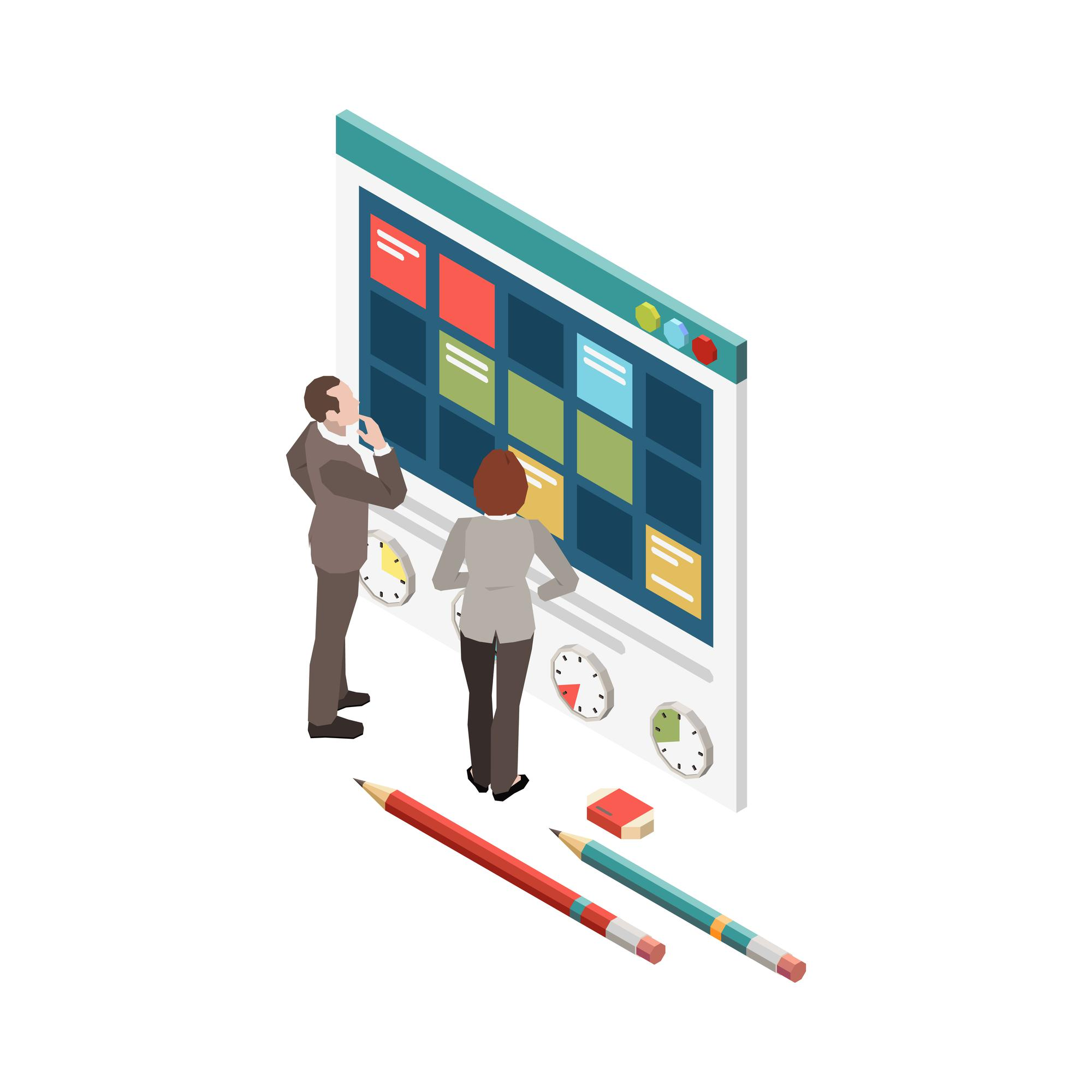In the fast-paced world of software development, agility has become the name of the game.
Agile methodologies have revolutionized how teams collaborate effectively, respond to change, and deliver value to their customers.
At the heart of every successful agile team lies the pivotal role of a business analyst.
In this article, we explore why effective communication is the lifeblood of agile business analysts and how it empowers them to thrive in dynamic, cross-functional environments.

Effective Communication for Agile Business Analysis
Effective communication is the secret sauce that fuels seamless Agile business analysis. In this dynamic world, where teams collaboratively shape projects, communication acts as the binding glue. Picture yourself as a bridge between different teams, translating business aspirations into clear instructions for tech wizards.
In Agile, it’s not just about talking, but also attentive listening. You’ll be in online and face-to-face meetings, ensuring everyone grasps the big picture. This speedy problem-solving creates camaraderie among teammates.
Your stories become precise guides, leaving no room for confusion. Think of them as detailed roadmaps for tech experts to craft what the business craves.
Despite the buzz of communication, it’s like having a superpower – you navigate challenges, pivot swiftly, and stay on course. Open dialogue becomes the recipe for team unity and groundbreaking innovation.

What Is the Agile Methodology?
Think of it as piecing together a puzzle without knowing the final image. Agile methodology, used mainly in software development projects, works similarly.
Instead of planning everything upfront, Agile teams break tasks into small bits, gradually assembling them.
It’s like constructing a house – foundation first, then walls and windows – ensuring each part is solid before advancing.

The brilliance lies in flexibility. Agile teams swiftly adjust to changes and new insights, creating in incremental steps. It’s a flexible, collaborative, and iterative approach that crafts perfection piece by piece.
The Business Analyst Role in the Agile Team
In the exciting world of Agile teams, the role of a business analyst (Agile BA) takes center stage. Let’s dive into what this role is all about and how it makes a real difference in the project.
Definition and Responsibilities
Think of a business analyst as a project detective. Their job is to gather clues (or requirements) from different parts of the company and figure out how to turn them into a fantastic finished product. They’re like the translators between the business side and the tech side of a project.
A business analyst wears many hats: they talk to customers to understand what they need, create detailed plans, and make sure everyone is on the same page. It’s their mission to make sure the project is headed in the right direction and meets the needs of the business.

Bridging Business and Development
Imagine you’re at a party where people speak different languages. You’d need someone who understands both languages to help everyone communicate, right?
Well, that’s exactly what a business analyst does for a project. They take the ideas and needs of the business folks and translate them into instructions that the developers can understand. This bridge-building makes sure nothing gets lost in translation and that everyone’s happy with the final result.
Facilitating Agile Processes
Agile methodology is like a recipe for cooking up success in a project. A business analyst plays a key role in making sure all the ingredients (or tasks) are prepped and ready to go. They help the team decide what needs to be done first, who’s doing what, and when things should be finished. By keeping everything organized and moving smoothly, they make sure the project stays on track and delivers top-notch results.
In a nutshell, an agile business analyst is a superhero who brings the business and tech worlds together, keeping things running like a well-oiled machine. Their unique blend of skills and responsibilities makes them the glue that holds the project puzzle together.
A Valuable Asset for Agile Business Analysts
Now, let’s zoom in on a crucial tool in an Agile business analyst’s toolkit: Communication skills.
These skills are like the secret sauce that makes everything run smoothly, ensuring that everyone’s on the same page and the project sails toward success.

Vital Role in Agile Settings
Picture a busy kitchen where chefs are whipping up a delicious meal. The chefs need to communicate clearly to create a masterpiece, right? In Agile methodology, it’s pretty much the same. Communication is the secret ingredient that makes sure everyone knows what’s cooking and how to make it happen. A business analyst act as the communication maestros, making sure information flows freely between the different teams.
Verbal and Written Proficiency
Just like a good storyteller, a business analyst needs to be great at both talking and writing. They explain complex ideas in a simple way that everyone can understand. Whether it’s chatting with teammates or drafting important documents, their words are the building blocks that keep the project sturdy and strong.
Enhancing Collaboration and Teamwork
Think of a music band creating a hit song. Each member has an instrument, and they need to play together harmoniously. A business analyst is like the conductor, ensuring that everyone plays their part and the melody comes together seamlessly. With their skills in communication, they encourage teamwork, brainstorming, and the sharing of ideas, resulting in a symphony of success.
Impact of Poor Communication
Imagine a game of telephone where a message gets passed from person to person. By the time it reaches the end, it’s usually all mixed up, right? Poor communication can do the same thing to a project.
If important details are unclear or misunderstood, the project can go off track, deadlines can be missed, and the final product might not match what was originally intended. A business analyst knows that clear communication is the compass that keeps the project heading in the right direction.
In a nutshell, an agile business analyst is like the smooth talker of the project world. Their skills in communication ensure that everyone’s singing from the same sheet of music and that the project’s journey is a harmonious one.
Effective Communication Strategies for Agile Business Analysts
Communication isn’t just about words; it’s about how those words are delivered and received. An agile business analyst has a few tricks up his sleeves to make sure his messages hit the bullseye every time.
Let’s take a look at these savvy strategies.

Face-to-Face Conversation
Ever played a game of “Telephone” where a message gets passed around a circle? The final message is often a hilarious distortion of the original. An agile business analyst avoids this by engaging in face-to-face conversations. It’s like having a direct line to share ideas, ask questions, and get instant feedback. This strategy cuts out misunderstandings and keeps the project moving forward smoothly.
Clear User Stories and Business Needs
Imagine you’re giving someone directions to your house. You wouldn’t just say, “Turn left, then go straight.” You’d give clear, step-by-step instructions. A business analyst does something similar with user stories.
The development team understands exactly what needs to be built from the stories which are like a roadmap. By making sure the stories are crystal clear, business analysts ensure that the final product matches what the business wants.
Collaborative Efforts with Stakeholders and Teams
In the world of Agile, it’s like a big party where everyone’s invited – stakeholders, developers, testers, and more. A business analyst is the party planner, making sure everyone has a seat at the table.
They create an open space for ideas, feedback, and discussions, bringing all the voices together. This collaboration not only leads to better solutions but also builds a sense of ownership among the team.
Transferring Knowledge Effectively
Ever tried teaching someone to ride a bike using just words? It’s tough, right? A business analyst knows that sometimes you need more than words, which is why they use tools like diagrams and charts. These visual aids help transfer complex ideas and processes effectively. It’s like adding training wheels to the bike of understanding, making sure everyone stays on the right path.
In a nutshell, an agile business analyst is a communication ninja, using these smart strategies to ensure everyone’s on the same page, every detail is clear, and the project keeps rolling forward without a hitch.
Business Value and Agile Business Analysts
At the core of every agile project is the creation of business value. A business analyst contributes to this value by linking business analysis directly to the project’s success. Through effective communication, they deliver valuable software solutions that align with the needs and expectations of the business stakeholders.

To gauge progress and effectiveness, a business analyst measures essential agile metrics. These metrics help track the team’s performance, identify areas for improvement, and celebrate successes.
Real-Life Example: A business analyst working on a data analytics project facilitates effective communication between the development team and the business stakeholders. The insights gained from the analytics software empower the stakeholders to make data-driven decisions, resulting in cost savings and improved customer satisfaction.
Career Journey of an Agile Business Analyst
The path of an Agile business analyst is an exciting adventure filled with growth, learning, and impactful contributions.
Let’s explore the stages of this journey, from agile business analyst salary to taking on leadership roles in the dynamic world of Agile.
Developing Communication Skills
Just like a superhero refining their powers, every Agile business analyst starts by sharpening their communication skills. Clear and effective communication is the compass that guides their actions.
Through practice and experience, they learn to translate complex ideas into simple terms, facilitate discussions, and make sure everyone’s on the same wavelength. These skills become the solid foundation upon which they build their career journey.
Adapting to Agile Transformation
The Agile landscape is constantly evolving, and an agile business analyst is the adaptable chameleon of the industry. They embrace change and navigate the twists and turns that come with it. As Agile methodologies transform and new practices emerge, these analysts are at the forefront, eagerly adapting and applying their skills to ensure projects remain on course.
Advancing Roles in Agile Environment
An agile business analyst is like the MVP of his team, and his journey doesn’t stop at just one role. As they accumulate experience and expertise, they have the opportunity to take on more specialized positions. Some may evolve into business advisors, guiding organizations with their insights.
Others might become agile coaches, empowering teams to unleash their full potential. Whatever the path, an agile business analyst plays an integral role in shaping the agile landscape and driving innovation.
Real-Life Example: A junior Agile business analyst joins a software development team with limited experience. In this development team, they focus on enhancing their communication skills by actively participating in discussions and refining their documentation.
As the team goes through a shift toward agility, our analyst embraces the change and becomes a key player in implementing Agile practices. Years later, they advance to a senior role, where they not only drive effective communication but also mentor junior analysts and lead Agile workshops.

Conclusion
In conclusion, effective communication is the backbone of a successful agile business analyst.
Through their exceptional communication skills, business analysts bridge the gap between business stakeholders and development teams, ensuring that projects deliver value.
By facilitating collaboration and understanding among team members, they foster an agile mindset that promotes adaptability and growth.
As the software development industry continues to evolve, the role of the agile business analyst will remain critical.
By continuously developing their communication skills and embracing the principles of agile, these professionals will shape the future of software development, driving innovation and success.

People Also Ask (FAQs)
Why is effective communication so crucial for business analysts in an Agile team?
Effective communication is the glue that holds Agile teams together. A business analyst acts as an intermediary between different stakeholders, translating business needs into actionable tasks for development teams.
Clear communication ensures that everyone understands the project’s goals, requirements, and priorities. It minimizes misunderstandings, reduces delays, and fosters a collaborative environment where team members can work cohesively toward a common objective.
How does effective communication impact the success of Agile projects?
Effective communication is the driving force behind successful Agile projects. When a business analyst communicates well, he ensures that the development team is building the right features and functionalities.
It helps prevent costly rework and keeps the project aligned with the business’s vision. Additionally, clear communication enables agile teams to adapt to changes swiftly and make informed decisions. It fosters a culture of trust and transparency, allowing team members to share ideas, raise concerns, and solve problems collectively.
Can you provide an example of the consequences of poor communication in an Agile team?
Imagine a scenario where a business analyst fails to communicate changes in requirements to the development team during a sprint. As a result, the team proceeds with their original plan, unaware of the modifications. When the project is presented to stakeholders, it falls short of expectations, leading to frustration and delays.
Poor communication can lead to misunderstandings, wasted efforts, and even project failure. An agile business analyst mitigates these risks by ensuring that information flows smoothly, preventing such detrimental consequences.
What are Agile methods, and how do they differ from traditional approaches?
Agile methods are modern approaches to software development and project management that prioritize flexibility, collaboration, and iterative progress.
Unlike traditional methods, such as Waterfall, which follow a linear and sequential process, Agile methods focus on adapting to change, delivering incremental value, and involving stakeholders throughout the development lifecycle. Some prominent methods include Scrum, Kanban, Extreme Programming (XP), and Lean Software Development.



